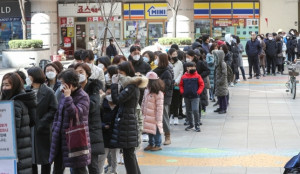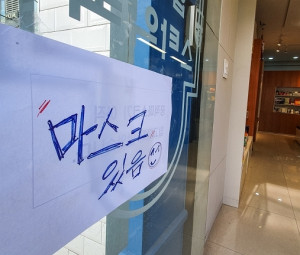South Koreans’ daily lives seem to change in the aftermath of COVID-19. On March 28, Prime Minister Chung Sye-kyun put great emphasis on joining the government’s campaign, ‘social distancing’, in order to fight against the novel coronavirus by avoiding social gatherings, saying that individual efforts are as essential as government measures. The country of over 50 million people have been doing their bit to help. The increasingly important trend of minimizing contact has been included in the “untact” movement, which means ‘to undo contact where possible.’ Schools remain closed and firms are encouraging their workers to work from home using internet. As of March 12, according to the Korean government and IT industries, demand for online services, such as streaming media service, e-commerce and online games, has increased markedly with the spread of virus.
The government utilizes the highly wired systems properly to contain further spread. There is no doubt that IT agile data infrastructure in Korea enabled a rapid epidemiological study which commenced to investigate the origins of the infection and the pattern of its spread. Korean health authorities are testing hundreds of thousands of people for infections and tracking potential carriers, using cell phone and satellite technology. Korean health authorities and local governments have been notifying the tracking path of confirmed people, using its homepages, social network services, and smartphone applications. Especially, applications are being actively used. Also, as preventive products, such as surgical masks and hand sanitizers, are sold out as soon as stored, the Korean government directly buy surgical masks and supply them at lower cost. On March 11, the government started notification app which signal the location where people can buy surgical masks supplied by the government and its stock. Just 10 days after the government released mask sales status information, a public data, to the private sector, about 50 services were developed by private companies or developers as applications or websites and provided to citizens.
But there are information disadvantaged group who lag behind these changes. Aged people, who are not accustomed to smartphone or internet use, feel neglected by this ‘smart’ government actions. It is difficult for them to identify the movements of the confirmed cases online or even the places where they have to go in order to get the public mask. Sejong City announced on the March 31st that it will implement the text notification service using its smart portal, which automatically informs citizens aged 65 or older of the time of receiving public masks, from April 1. The service is designed to ease the difficulty of older citizens visiting various pharmacies or waiting in line for a long time, not being informed when they can buy masks. However, senior citizens still need help to access and receive this service, too.
According to the ‘Report on Digital Divide 2019’ conducted by Ministry of Science and ICT and National Information Society Agency, the level of comprehension of digital information services for the elderly aged 55 or older was 64.3 percent, compared with 100 percent for the level for the general public. The figure is up about 10 percent from 54 percent in 2016, but is only about half 123 percent for the Digital Native, which means 10s and 20s who grew up in the digital environment from childhood.
Mr. A, who lives in Seoul, said “when information regarding COVID-19 is delivered through a smartphone application, it is hard to check without help from my sons and daughters.” The digital divide becomes bigger when he or she live in a small town or remote village. Education at community center or welfare center for senior citizens, which had taught older people how to use smartphones and the Internet, has also been suspended due to the spread of COVID-19. In effect, the way to let the elderly know how to use the new digital service related to the virus has almost disappeared.
We can see that education and efforts should have been made to enhance the accessibility of information for the elderly before the disaster hit, but they were insufficient. Pre-education should be conducted to help the elderly easily access digital services in disaster situations. Once things have calmed down, the government should focus its efforts on policies that will enhance the acquisition for capabilities of the digital underprivileged.
Kayla Hong
Asia Journal
(Los Angeles Times Advertising Supplement)



